It's spawning season for horseshoe crabs in Great Bay, along coast
I was visiting my aunt in Manhattan this past weekend. Watching the news, nestled between all the typical big city stories, was one about the return of horseshoe crabs to the coast.
On beaches much like ours, horseshoe crabs were shown scuttling around in the sand. From now through June, you can find horseshoe crabs gathering at high tides all over Great Bay (and south to Florida) as they congregate to spawn. Up here in New England, we are at the northern extent of their range
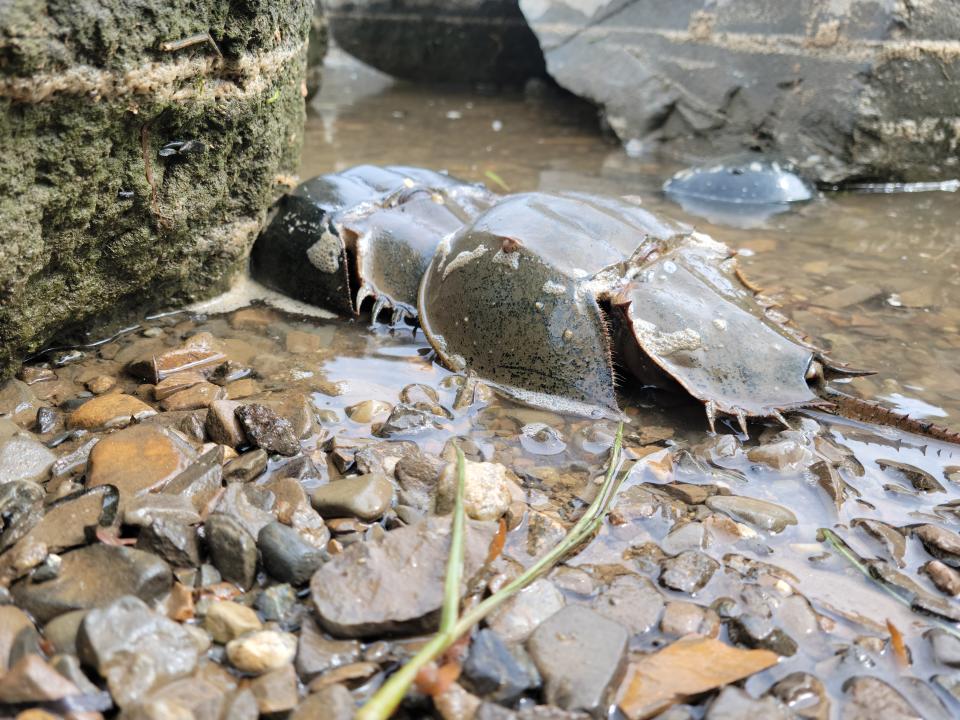
I would say they are everyone’s favorite crab, but they aren’t crabs. They are instead more closely related to the spider clan. Most people consider them cute (even those who find spiders creepy) with their rounded, horseshoe-shaped shells, prominent eyes and spiky tail.
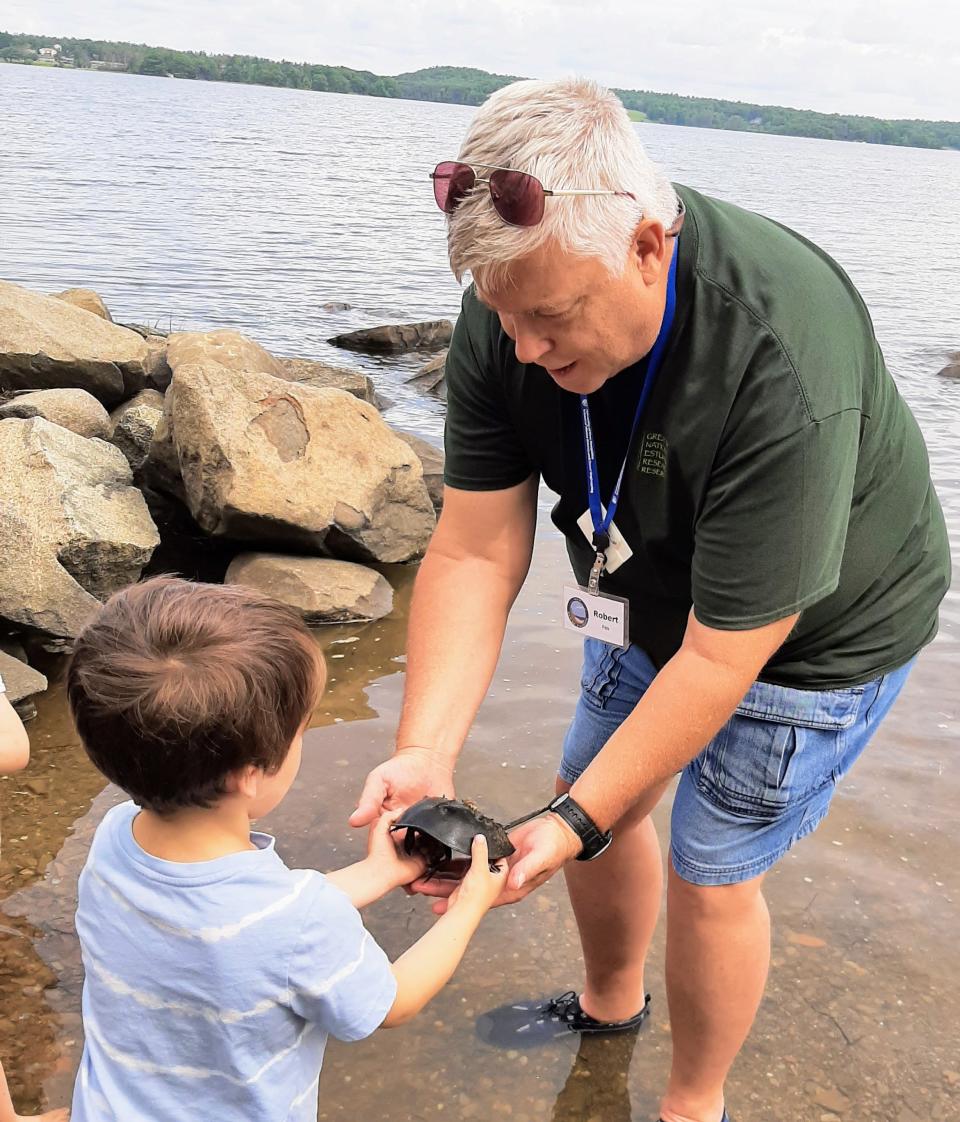
Horseshoe crabs are what we often call living fossils — not because they are fossils that are alive, but because they have stayed relatively unchanged in their form for a very long time, over 450 million years, which is 200 million years before the dinosaurs!
The reason they have been successful for so long is they have a number of interesting adaptations that have allowed them to survive our constantly changing planet. First is that spiky tail, it’s called a telson and is not a weapon, though I guess if you stepped on it wrong it would hurt. The horseshoe crab uses it to help with steering and to right itself when it gets flipped over - which happens more often than you would think as it is buffeted by waves in the intertidal zone.
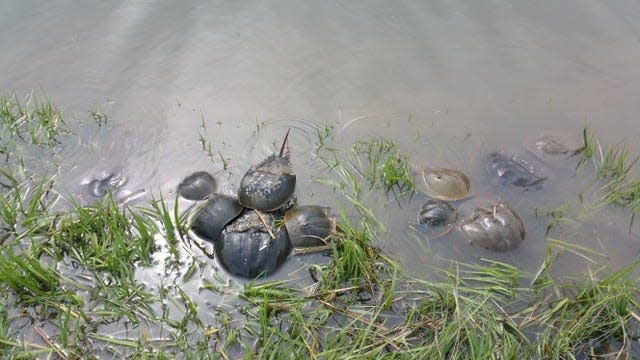
I think my favorite features are its eyes. Those two prominent large eyes on top of the shell (the prosoma) are compound eyes that horseshoe crabs use for finding mates and sensing light. Each of these has approximately 1,000 receptors, rods and cones, which are similar to ours except for being 100 times larger. They can change their sensitivity to light, so at night become much more sensitive to light to help with recognition of other horseshoe crabs. They have eight other eyes that serve different known and unknown functions, one of which is located on the tip of the telson! It is thought that the tail eye helps their brain synchronize with light and dark cycles, according to the Maryland Department of Natural Resources.
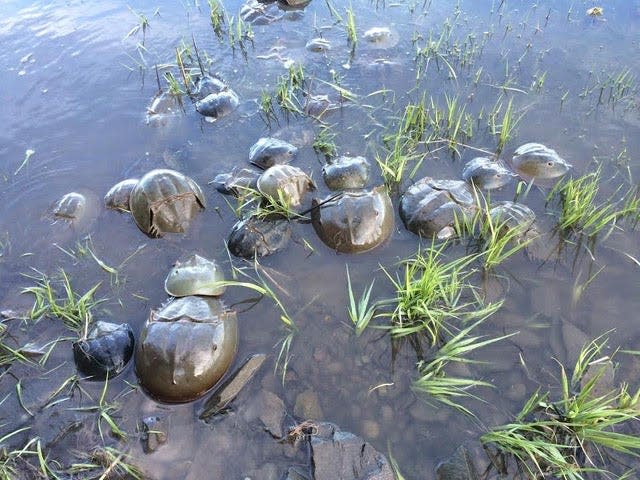
So this is the start of the breeding season here in the Seacoast area. Work out of Win Watson’s (UNH) and Chris Chabot’s (Plymouth State University) labs suggests that our horseshoe crabs cue off of ocean temperature to signal the start of spawning season. “They come up to the edge of the water at high tide both day and night to breed. The myth was they only bred on the full moon, but we proved that wrong,” according to Win Watson. To mate, the smaller male crabs hook themselves on top of the female’s shell using specialized front claws (an easy way to determine gender) and hang on while she crawls up to the beach. The female digs small nests in the sand and deposits her eggs as the male fertilizes them. Other males (called satellite males) hang out nearby and often manage to also fertilize some eggs. The larvae will hatch out in a few weeks and spend most of their long lives out in the intertidal sand flats feeding on a variety of invertebrates.
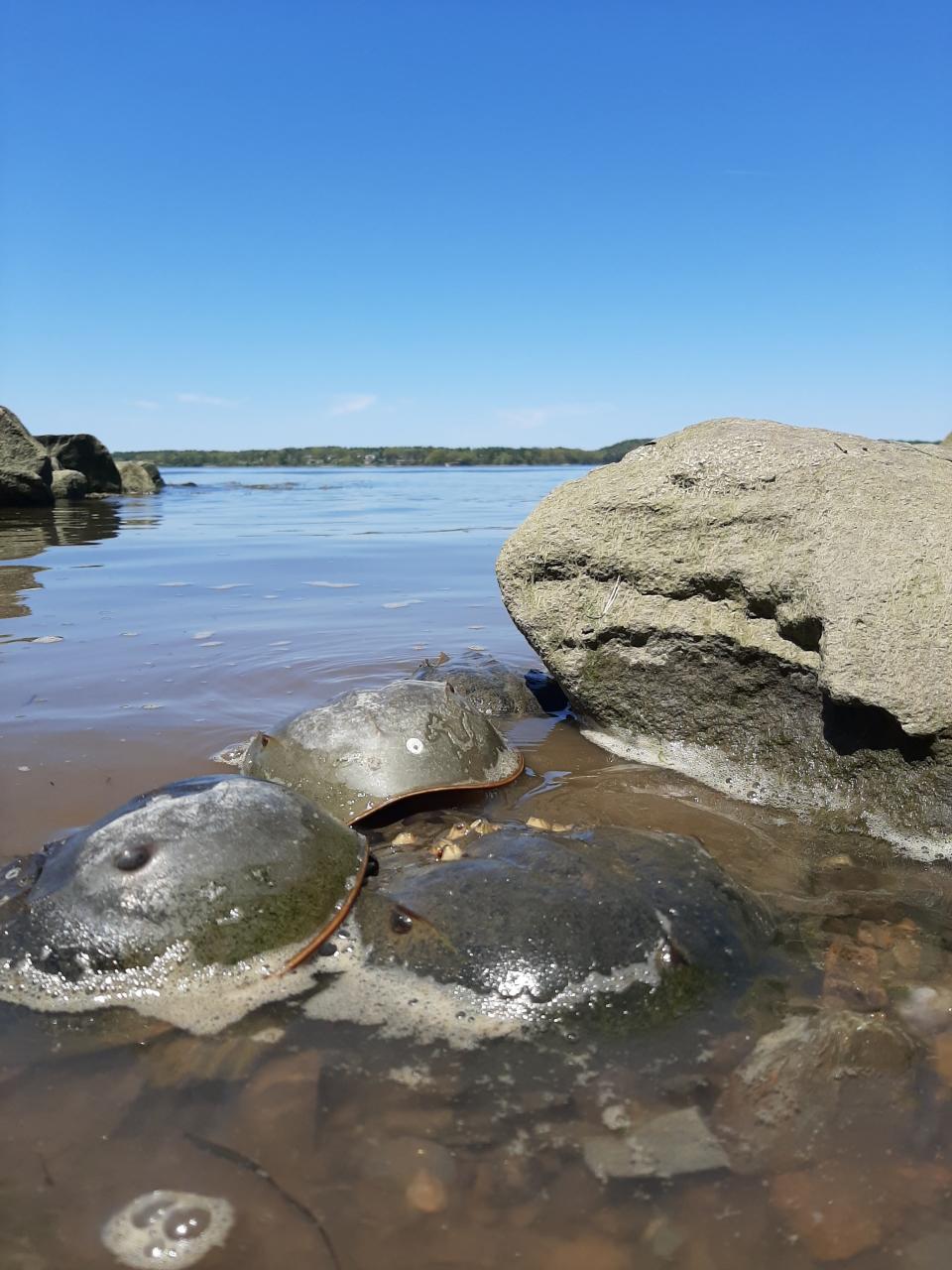
Horseshoe crabs are important for humans. We use their copper-based blue blood in medical testing and as bait, but more importantly they are a vital part of coastal food chains. Their eggs are a critical food for a large number of migratory and coastal birds as well as some reptiles and fish. They are currently listed as a vulnerable species due to habitat loss, beach development and overharvesting as a result of the aforementioned human uses. Therefore, there are a number of active monitoring programs along the Atlantic Coast to track populations.
There has been a citizen volunteer-based spawning survey of Great Bay horseshoe crabs since 2012. Volunteers walk beaches in Great Bay during all daytime high tides and count (and tag) horseshoe crabs during May and June. According to Win Watson, “This is important in NH because we have kind of a 'control' population that is not fished, so if our numbers are stable, while those in Massachusetts, for example, are going down, this indicates that the harvesting has an impact. Or, if our numbers are going down, it might indicate something else, like climate change, is having an impact." The Great Bay National Estuarine Research Reserve Discovery Center in Greenland has a program to train Horseshoe Crab Naturalists. Contact the Discovery Center for more information.
If you are interested in seeing horseshoe crabs in action, look for them at high tide with moderate waves and warm temperatures along Great Bay. The boat ramp at the Great Bay Discovery Center is ideal. But please be respectful and don’t disturb them — wouldn’t it be great if we could protect them so that they last another 450 million years?
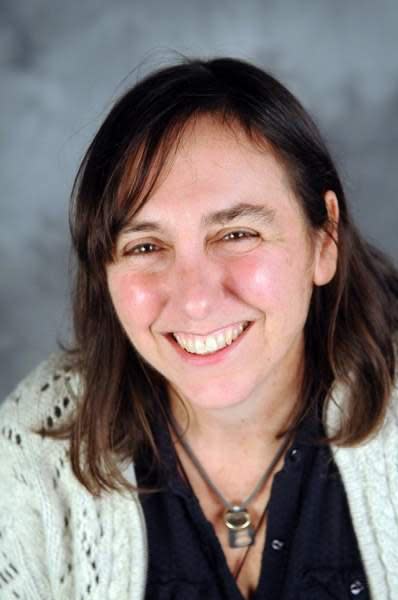
Susan Pike, a researcher and an environmental sciences and biology teacher at Dover High School, welcomes your ideas for future column topics. She is looking for readers to send her the signs of spring they're noticing so she can document them on her website pikes-hikes.com. Send your photos and observations to spike3116@gmail.com. Read more of her Nature News columns online at Seacoastonline.com and pikes-hikes.com, and follow her on Instagram @pikeshikes.
This article originally appeared on Portsmouth Herald: Horseshoe crabs spawning in Great Bay, along coast of NH, Maine

